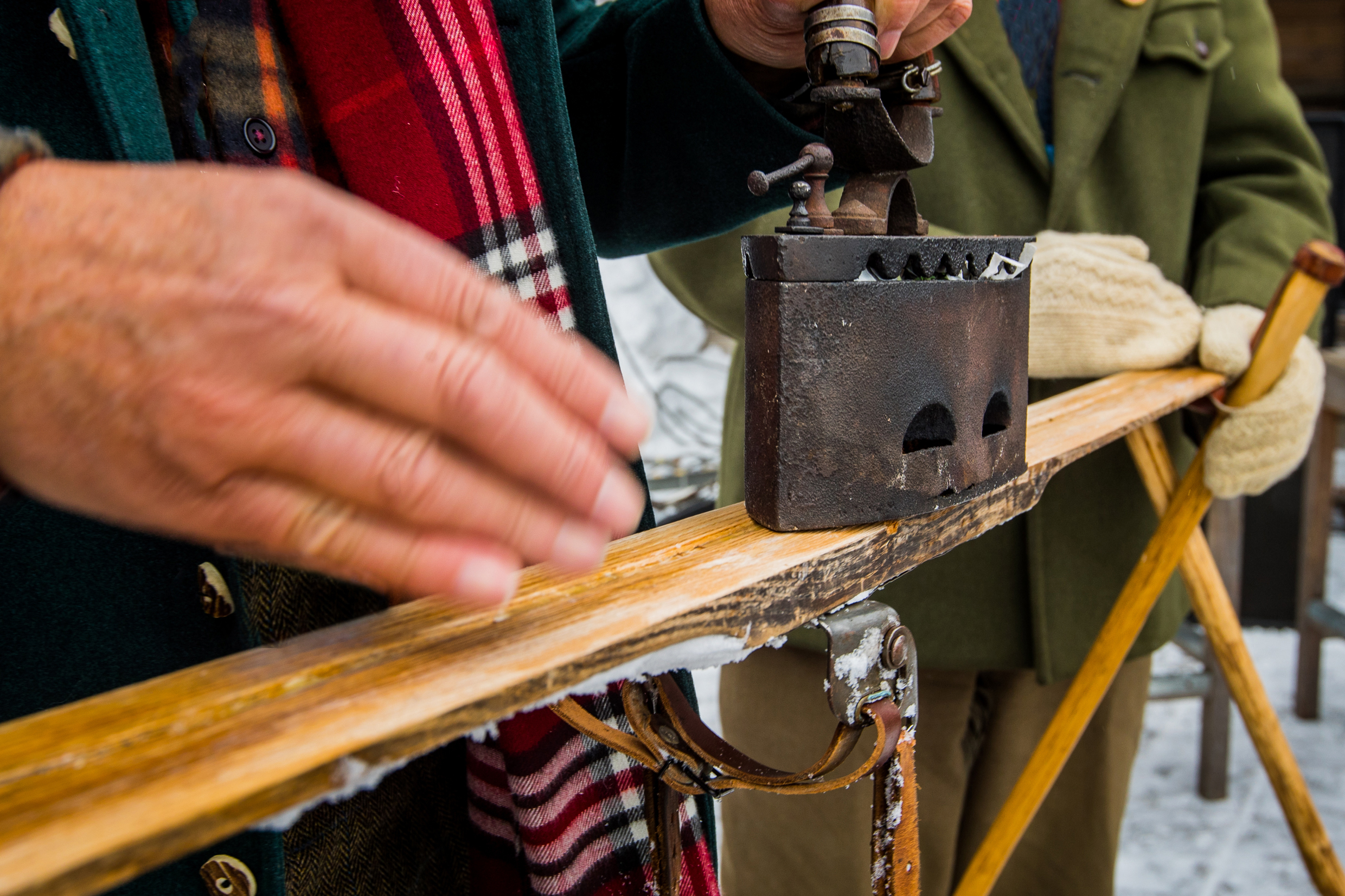It’s that time of year, again! Days are getting shorter … Temperatures are getting colder …

I don’t know about you, but I am starting to have visions of perfectly groomed skate lanes and classic tracks dancing in my head!
I like to organize and go over all of my Nordic gear pre-season to ensure that I AM READY, when the snow is READY! Proper care, storage and maintenance of your Nordic gear can enhance your Nordic experience and add to the life expectancy of your gear.
Finally! It’s time to scrape off the storage wax and check the condition of your bases. If your bases feel rough, look grey-ish, appear chalky or dry, a good hot box treatment and/or hot wax will be needed to ensure your Nordic fun!
Frequency of hot box treatment or hot wax depends on how often you ski. Minimal base care should include a good hot wax at the start of each the season. If you are a more avid skier, you will probably want to hot box and wax more often. Several factors can indicate when it’s time for a wax.
Time to wax your skis when …
- Your skis feel slower
- Snow is sticking to the bottom of your skis
- Temperatures and snow conditions change (super cold to fresh powder to wet and slushy etc.)
- Fresh snowfall
- Your bases feel rough, look grey-ish, appear chalky or dry
- Time for the end of the season storage wax
Hot box treatment does not have to be done as often, but it does help your waxes throughout the season last longer. The hot box allows the wax to gently soak in to and fill all of the pores on the base. Creating a smooth and even surface. Waxes done between hot box treatments last longer, as the wax adheres more evenly to the filled in, smooth surface. If you are noticing your hot waxes aren’t holding up or your bases look rough, dry or chalky, it might be time for a hot box treatment.
You can hot wax your skis as often as you like! For best results, use the proper wax for the snow temperature and type. Nordic ski waxes and alpine ski waxes are the same. They are temperature-specific and color coded. All designed to work within a specific temperature range. The wax colors range from “cool” colors (like blue and violet) for colder temperatures to “warm” colors (like yellow and orange) for warmer temperatures. Colors and temperature values may vary slightly between brands, but the “warm” and “cool” color standard is consistent.
Generally here’s how it goes …
- Blue – very cold snow – temperatures 0 to 20 degrees F
- Violet – cold snow – temperatures 10 to 30 degrees F
- Red – good standard snow – temperatures 20 – 40 degrees F
- Yellow – wet snow – temperatures between 30 to 50 degrees F
- White, green or colorless is generally a universal wax
- Refer to brand packaging for the specific details of the wax.
And then there is the paste wax option … Paste waxes are faster and easier to apply and do not require an iron. It’s a traditional paraffin wax suspended in a wax conditioner. Paste wax provides the same results of a hot wax. But since you are not using heat, it does not sink as deep into the pores of the base and will not last as long as heat applied wax. The hot wax process takes more time, but is more durable than a paste wax. Especially in wet snow conditions.
Proper short and long term storage of your skis is important for the life of your skis. Skis should be stored in a cool, dry, weatherproof environment (out of direct sunlight). Avoid places where temperatures and humidity fluctuate. No damp basements or attics. Extreme temperatures, moisture, humidity and UV are known enemies of your equipment when it’s not in use. Drying off your skis after each use is a great practice. It can help prevent rust and corrosion. It’s not a great idea to store your skis outdoors. Moisture can accumulate and freeze up, creating possible issues with the operation of your bindings. At that point all you can do is wait for them to thaw out.
At the end of the season, take a few minutes with a garden hose and a towel to thoroughly remove dirt, salt, road grime, and dog poo. A small amount of citrus solvent helps remove grease and spring pollen. Adding a thick layer of “storage wax” to the bases can provide further protection and prevent drying during the summer off-season. A low melting point orange or red wax works well for this. Storing your skis vertically (wall mounted ski rack, ski stand, or propped up agains a wall) can help prevent warping and bending. Never bind your ski closed, compressing the camber of the ski.
‘Ski ya out there!”


